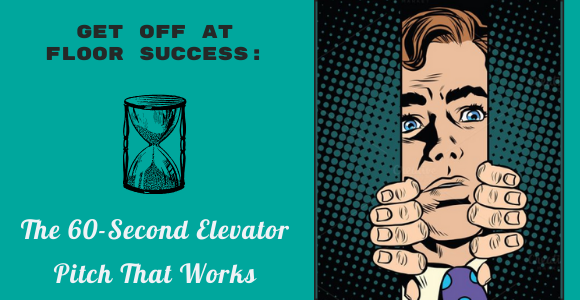So, a couple of months ago, I got the opportunity to attend a screenwriting workshop. It was about the art of adapting pre-existing material into a screenplay that sells (or at least one that makes you feel good about it). We dissected the process, looked at some success stories, some writing disasters, it was fun… and then it got interesting. Julian Friedmann, one of the lectors, stood up and said: “It doesn’t matter what you’ve done or plan on doing if you can’t sell it.” And then he taught us how to pitch.
And since it’s the holiday season, I feel the urge to share my notes.
Now, the way Friedmann taught us, it was contextually about selling your screenplay/writing to producers, but I’ll shift the focus to more universal pitches. Bear in mind he’s spent over four decades teaching people how to pitch and write. The guy knows his stuff.
The Deal with Elevator Pitches
If we’re not buying, we’re selling. Sometimes, we even buy while we’re selling.
The point is, we all sell. And if we’re selling, we’re pitching.
That’s what I’ve come to realize during my time on this earth.
No matter if it is for that job you want, a startup you’re launching, a project you want to develop, or an idea you wish to sell — if you can’t be convincing in 60 seconds or less, you won’t do better if you have 60 minutes or more.
It’s called an elevator pitch because it has to fit in a brief elevator ride. Also, people with lots of money don’t have the time to hear your heartbreaking story about making it in the big city. They want to hear you say, “I can help you make more money.” Just not with those exact words.
Maybe. I’m just guessing here.
Elevator pitches are not limited to those big metal moving boxes. They can also happen:
- On the stairs (rich people are extravagant enough to use those)
- On the street
- At job fairs with too many people and not enough air
- At a kids’ birthday party
- Next to a bagel stand
- At a business/tech fair
- In a good old office environment
I’m trying to say that the conditions for your elevator pitch performance will hardly ever be perfect. So don’t think much about the appearance of things and focus more on the content side of it. In fact, the content is so important that some people even hire writers to make sure they have all the words right.
Dissecting the Perfect 60-Second Elevator Pitch
Here’s the smart way to use up your 60 seconds of fame.
5 seconds: Tell your name and profession
- 5 seconds:
- Your title — for the job you’re applying, the name of your startup/project, etc.
- Format — business startup, project, book, type of job, etc.
- Goal — pick just one! Phrase it as a bold statement and leave it at that. You need to hook them without being clickbaity. Remember when we talked about one-sentence pitches? Your elevator pitch MUST have one. 2) and 3) usually go together, so you shouldn’t worry about having only 5 seconds here.
10 seconds: Awards and nominations — what are your achievements in the field, yours as well as those of the main people involved (if applicable)
25 seconds: THE PARAGRAPH
5 seconds: THE POSE

Sherlock’s famous thinking pose by Benedict Cumberbatch
You’ll notice that the sum of those is 50 seconds. The final 10 are for questions and reaction from the other side. Don’t stand like a robot, but also don’t sink your hands into your pockets like an awkward college student. Remember why you’re there. Confidence, not cockiness, is half of the job.
I’m guessing it had some other fancy name, but he was talking fast, so let’s stick to this ominous phrase.
The paragraph is where you sell what the other side is willing to buy. Don’t make it about you, but about them.
- What will they earn if they hire you/invest in your project?
- How will you do it better (as an employee, a startup, anything really); be specific and use numbers if you have them. People can’t remember numbers that don’t resonate with them, so find out what would impress the person beforehand. The best practice is to stick to 2 or 3 number statements tops.
- What are the immediate benefits, and what are the long-term benefits FOR THEM.
You have about 8 seconds for each of the three. Or, you can prioritize and leave out some details. It’s important not to be rushed because that makes people nervous and unnecessarily pressured. The more relaxed you are, the more relaxed they’ll be.
The Do’s and Dont’s of Elevator Pitches
The Do’s
Know the people you will be pitching to. Do your homework and make sure you understand who they are. You should speak to them and not a projected version of you. Jargon is not always good, and if they don’t get it, you won’t appear smarter at all.
Be positive and open-minded. No matter how impossible getting the Yes from them could be, don’t let it show on your face. Keep a positive attitude, and be flexible. If they like you, but maybe not for that particular project or position, you should be able to shift gears quickly. It’s a lot like with job interviews when you go in for one position, but you end up getting an offer for another. It’s the same with pitches, more or less.
Have a business card ready. No matter your background, or the reason for your pitch, make a business card and offer it at the end of the conversation. It is an offer to continue the dialog without pushing for a followup meeting right away. Bring a copy of your resume if the nature of the situation presupposes it (e.g., job position, project funding, startup development, etc.).
The Dont’s
DO NOT speak too fast. It is a natural instinct when we are pressured by time and nerves get the better of us, but resist it. Practice your pitch until you faint. Be mindful of the pace at which you speak. It’s not like stuffing a turkey and hoping there’s more for you to eat. It’s about making a delicious gourmet dish that hits the right spot. Less is more, slower gets your message across faster.
Don’t frown or speak monotonously. The fastest way to discourage a listener is by frowning and fidgeting. The easiest way to put people to sleep, is with a monotone voice.
No rambling. It happens when we’re nervous, and some may find it cute, but it will do you no good in such an environment.
The End of the Line
Well, that’s all I have in my notes + “buy h. paste”, which I’ve no clue about, so I hope you found this useful. Don’t forget to write down your pitch, time your rehearsals, and edit as you go, so it all flows well and comes out naturally. Should you hire writers to help you? It depends if you have the budget for it and how high the stakes are. I’d recommend having a pro take a look at least.
Till next time,
T.








